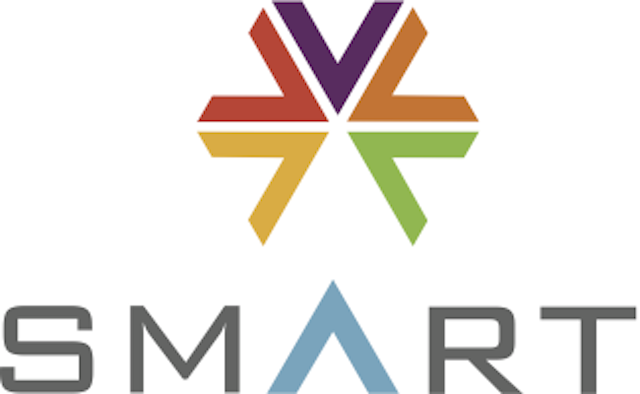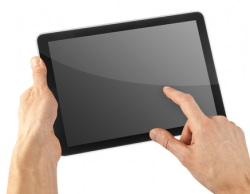In the new app-driven health economy, ease of use of IT for providers and patients is a must. Equally important is a sound technical approach and business plan for application creators looking for success, sustainability, and a large market for their innovations.
In the new app-driven health economy, ease of use of IT for providers and patients is a must. Equally important is a sound technical approach and business plan for application creators looking for success, sustainability, and a large market for their innovations. Under the leadership of Boston Children’s Hospital’s Drs. Kenneth Mandl, Isaac Kohane, Joshua Mandel and an advisory committee that includes former U.S. Chief Technology Officer Aneesh Chopra, Harvard Business School professor and notable author Clayton Christensen, and Eli Lilly’s director of Clinical Open Innovation Thomas Krohn, the new SMART (Substitutable Medical Apps & Reusable Technology) Platform aims to revolutionize the way providers and patients use applications to improve access to and quality of care. SMART apps are agnostic to the underlying electronic health record (EHR) or other IT platform. Like iPhone or Android apps, SMART apps are substitutable and can be readily added or deleted from EHRs.
Swapping Technology In Real Time
The SMART team has focused on enabling the property of substitutability in health IT through an application programming interface (API). This essentially allows innovators and developers who write an app to run it anywhere, and lets end users of health IT customize their systems with these substitutable apps.
“The opportunity is to create an ‘app store’ to extend the capabilities of EHRs,” says Dr. Ken Mandl of Boston Children’s Informatics Program . According to him, the trick to SMART is that the software developer doesn’t need to know anything about the underlying system just the format of data presented by the API, which will not change.
He makes an analogy to the original iPhones that used cellular towers to triangulate a user’s GPS, but shifted with the present day satellite GPS. When they did so, iPhone apps kept on working. The app developers did not need to know how the underlying system measured geo-coordinates. Similarly, SMART apps don’t need to know which electronic health record or pharmacy information system is in use at any given hospital. Instead, SMART app developers, like those developers for iPhone apps, simply use the original library to make upgrades and change out necessary components.
This is exactly what developers like Justin Cranford in Raleigh, North Carolina say are ideal for functionality. “In the iPhone, the library is written by Apple, and that internal code changes, but the commands I call to build apps just pull those changes in without me ever knowing. Think about how Tinder pulls in Facebook photos and triangulates your location through the phone.” Or, as Ken Mandl quipped, “I don’t imagine that each time the creators of Angry Birds wanted to add a bird they had to fly to Cupertino for a meeting with the Apple technical team.”
This method, known as abstraction, allows technologies to be swapped out and improved inside the walls of hospitals, clinics and other care facilities. A natural extension of which might be the ability to share these substitutions and updates with patients, allowing them access not only to their data, but community and population trends inside the hospital and out – which is most important to advisors like Thomas Krohn from Eli Lilly. According to him, “I’m at the table because the pace of transformation is too slow. Measures are poor, the timeline is slow and the apps are not presently scalable. This is the real opportunity,” he believes, “to allow innovation at the point of care.”
Clayton Christensen adds, “Modularized hardware and software are what make this unique. That element will determine the winners and losers.” When comparing it to his writing in The Innovator’s Prescription, he contends, “SMART fits the pattern of a successful business idea because the architecture is closed, proprietary and independent.”
Health Reformations Make SMART Possible
In addition to the creative ideas and established models that SMART is built upon, significant changes to the health system and technology in the United States have made advances such as this possible. Three specific incidences have had a particularly large effect on SMART.
First, the opening of health data has allowed payers, providers and patients access to new information. According to Aneesh Chopra, “The more data that is made available to consumers, the more ways data can be utilized and repurposed.”Although the Centers for Medicare and Medicaid Services (CMS) has not opened all of their data to the public, giving away payment information has opened many new doors for using payment information to better inform everyone in the health ecosystem.
Second, the digitization of health care has allowed for patient information to not only be collected, but to be used. By releasing patient information, our former CTO Mr. Chopra, who has a background in health, technology and policy believes that a patient revolution is on the horizon. He contends that the ultimate way to empower patients is to give them their own data to take beyond the four walls of the hospital or institution, and that means they can also use SMART in real time.
Third, payment reform in America is shifting us from a fee-for-service to an outcomes and value-based health system. Although there are significant flaws to the system, the mental shift for providers means that patient-centered care, outcomes and overall “value” will have new importance. The SMART team has faith that as payment reform occurs, their substitutable applications will not only create better care in facilities, but more informed providers and more engaged patients .
SMART Advisors And Partners
The advisors that have come together to make SMART a reality really are a who’s who of the health industry. In addition to the former White House CTO, universities and professors of note and the largest provider health systems, there has also been buy in from key technology companies, pharma, investors and consultants.
The list of advisors includes, but is not limited to:
– The Advisory Board Company
– AARP
– Centers for Medicare & Medicaid Service (CMS)
– England National Health Service (NHS)
– Eli Lilly
– Hospital Corporation of America (HCA)
– BMJ
– SureScripts
– Canadian Institutes of Health Research
The strategic input by this team of advisors makes it almost impossible to fail. Additionally, the SMART Platform is already funded by a $15M grant from the Office of the National Coordinator for Health Information Technology (ONC) .
However, in the coming months it will be interesting to everyone in the health space to see how successful the platform is and just how substitutable the apps are. As we all know, apps have to work with providers and patients, if they are going to work for providers and patients.







